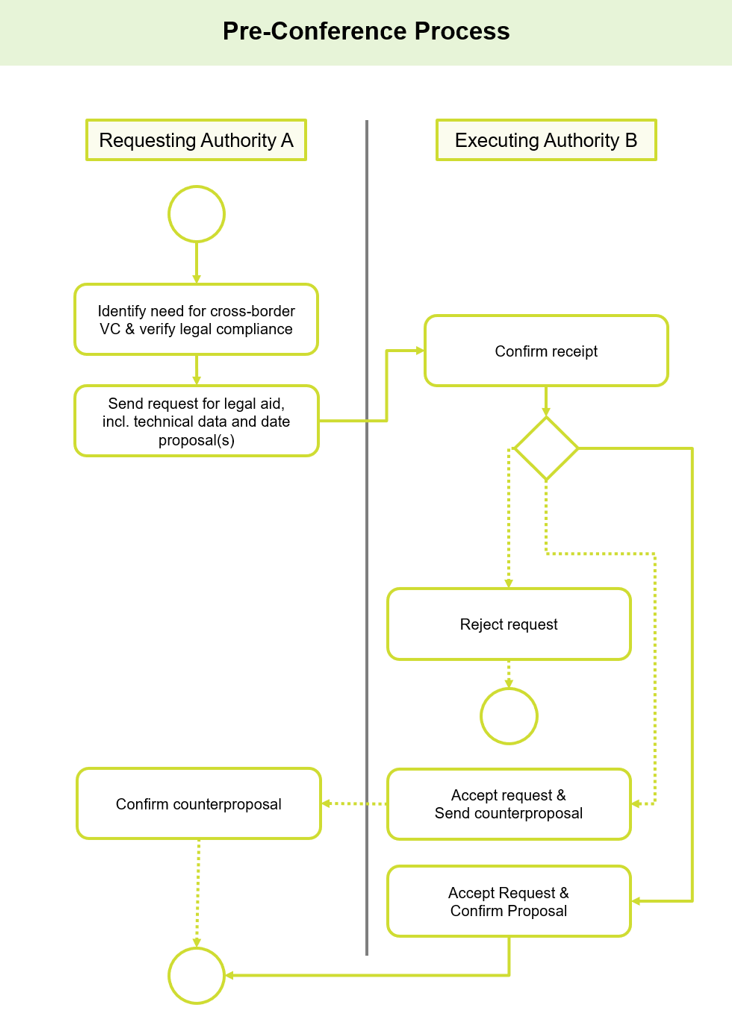
Cross-border judicial videoconferencing is more complex than national videoconferencing. Language, videoconferencing system, legal basis for videoconferencing and judicial processes are usually somewhat different. This is one of the reasons, why cross-border judicial videoconferencing is still perceived as a cumbersome process.
What can be done to mitigate this impediment for efficient cross-border judicial videoconferencing?
The IT answer to such questions usually is automation, which is best reached by standardisation. This is also applicable for a judicial workflow - which the process of setting up a videoconference is. The workflow can be standardised and so can the message, the form, to be used for transmitting all relevant data, which is necessary to support the workflow.
The legal basis for a workflow supporting the setup of a cross-border judicial videoconference is already there. It is provided though be multiple legal acts. Most notable are:
All legal acts provide - to different extents - a legal basis for requesting a cross-border videoconference. Business workflows are defined especially in Regulation (EU) 2020/1783 for civil law and in Directive 2014/41/EU for criminal law. Both legal acts also provide for technical details for the videoconference by means of a standardise form. However, both forms reflect practical needs for the setup of a cross-border videoconference only to a limited extent. Regulation (EU) 2020/1783 lists quite detailed most of the necessary data whereas Directive 2014/41/EU covers this need only roughly.
When analysing the actors, the general business collaboration, individual business transactions and the business documents to set up a cross-border videoconference in both legal acts, it becomes quite clear that the workflows are almost identical and can thus be generalised for both legal domains.
A generalised pre-conference workflow can be depicted like this:

Pre-conference workflow
The data to be transmitted with such a workflow is contained in a message, usually some kind of form. Both above-referred legal acts provide such a form, although to very different extents regarding the completeness of data.
The SimpliVi project has therefore carried out a gap analysis, which data is required or at least helpful when setting up a cross-border videoconference and which data is already there in both forms. The analysis then concluded with an extensive list of data, which should be provided through a form. Such a form can be standardised across the legal domains of civil and criminal law. The analysis also considered at which point(s) in the workflow the proposed form can be applied to support the setup of a cross-border videoconference best.
The preparatory phase of a cross-border videoconference is clearly the most crucial phase. However, it must not be forgotten, that during and even after the end of a videoconference there are further steps to be taken to ensure a smooth workflow. Both aspects are touched upon in the corresponding analysis document.
e-CODEX is the communication system dedicated for supporting cross-border judicial processes. It is therefore only natural to consider an e-CODEX implementation for the videoconferencing workflow. SimpliVi did so and analysed several approaches for this requirement. The result, however, is written down in a separate deliverable, which will be presented at this website at a later stage.
by Mathias Maurer
